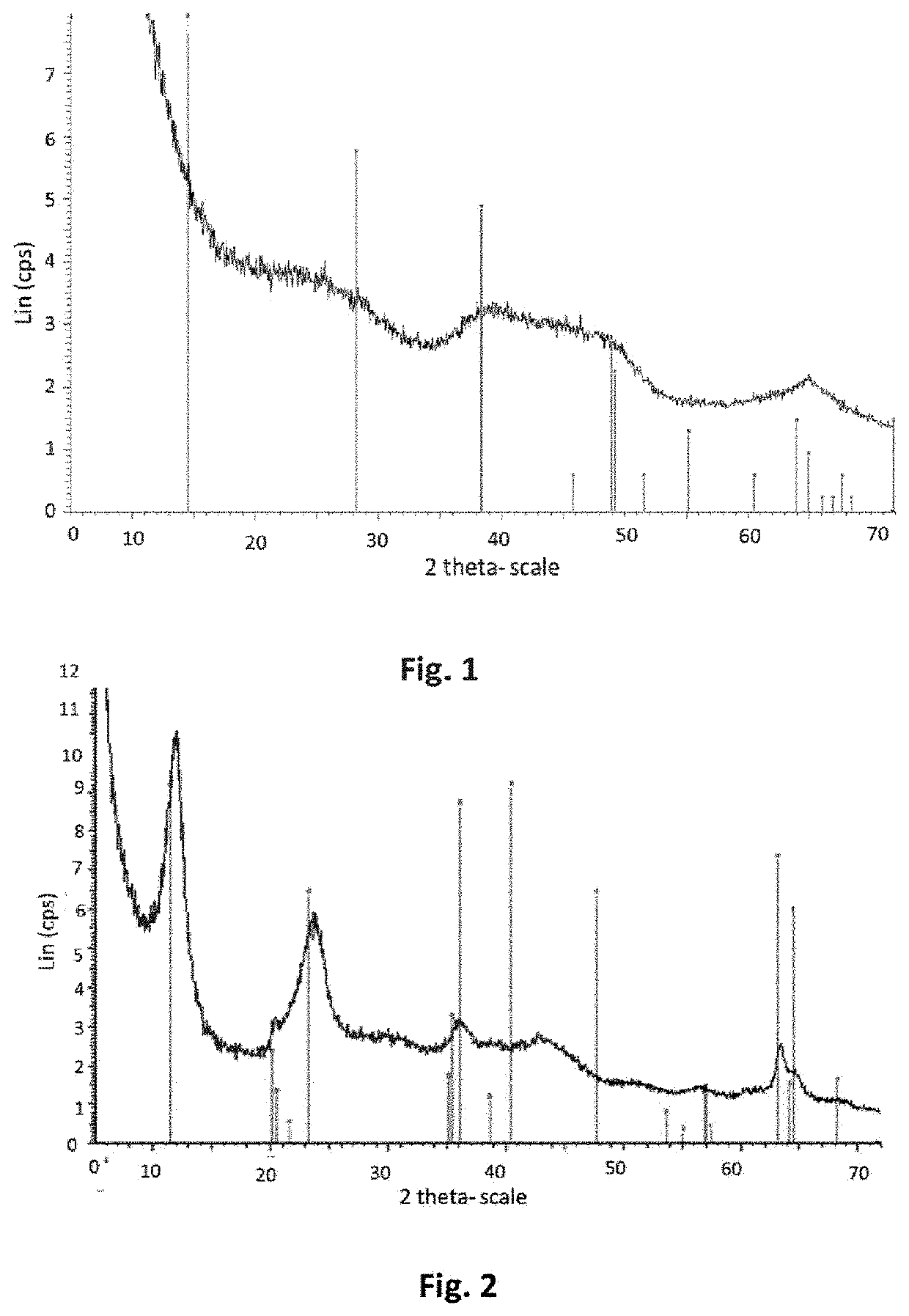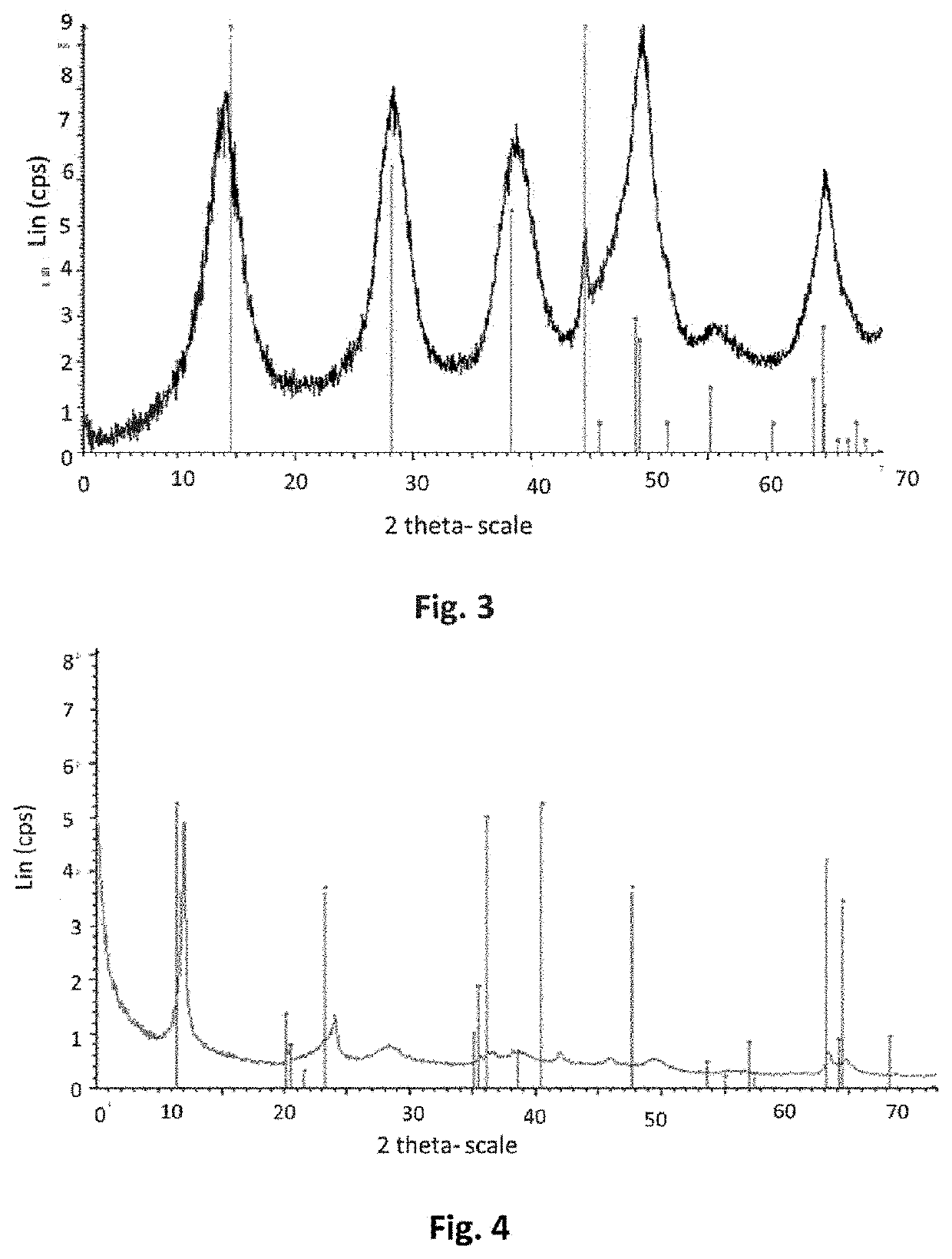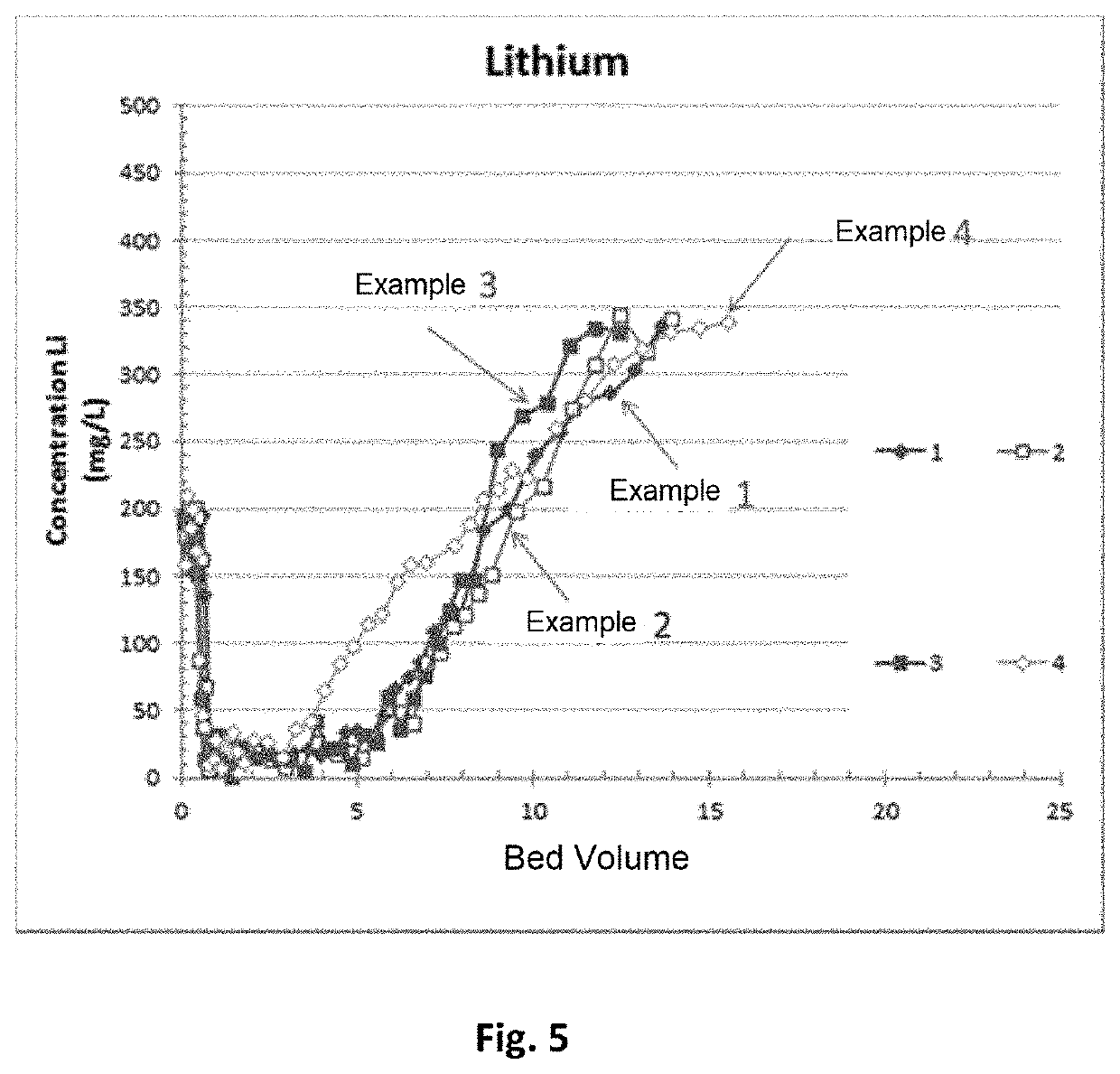Process for preparing an adsorbent material and process for extracting lithium using said material
- Summary
- Abstract
- Description
- Claims
- Application Information
AI Technical Summary
Benefits of technology
Problems solved by technology
Method used
Image
Examples
example 1
nvention)
[0203]A solid material was prepared of formula (LiCl)x.2Al(OH)3,nH2O with n being between 0.01 and 1 and x=0.6, with a synthesis process conforming to the invention, wherein the contacting step c) was performed with a Li / Al ratio of 0.5, and the forming step was carried out via direct extrusion without a binder.
[0204]1 / Precipitation of Boehmite AlOOH
[0205]In a beaker cooled over an ice bath, a solution was prepared containing 326 ml of deionized water and 135.6 g of aluminium chloride hexahydrate (AlCl3,6H2O). Under magnetic stirring 67.5 g of sodium hydroxide (NaOH) were added over 30 minutes to adjust the pH. The pH reached on completion of synthesis was 8. The temperature was held at 20° C. throughout the entire duration of the precipitation step. This cake was placed in suspension in a 3 L beaker with 320 mL of water.
[0206]A sample of the precipitate obtained was taken from the reaction medium. The XRD (FIG. 1) of the precipitate shows that the precipitate obtained in ...
example 2
nvention)
[0221]A solid material was prepared of formula (LiCl)x.2Al(OH)3,nH2O with n being between 0.01 and 1 and x=0.6, with the synthesis process conforming to the invention, wherein the contacting step was conducted with a Li / Al molar ratio of 0.5 and the forming step carried out by basic knead-extrusion.
[0222]1 / Precipitation of Boehmite AlOOH
[0223]In a beaker cooled over an ice bath, a solution was prepared containing 326 ml of deionized water and 135.6 g of aluminium chloride hexahydrate (AlCl3). Under magnetic stirring, 67.5 g of sodium hydroxide (NaOH) were added over 30 minutes to adjust the pH. The pH reached on completion of synthesis was 8. The temperature was held at 20° C. throughout the duration of the precipitation step. The suspension obtained was filtered and washed with water. The cake was placed in suspension in a 3 L beaker with 320 mL of water.
[0224]A sample of the precipitate obtained was taken from the reaction medium. The XRD of the precipitate was identical...
example 3
ive)
[0242]A solid material was prepared of formula (LiCl)x.2Al(OH)3,nH2O with n between 0.01 and 1 and x=1, with a synthesis process not conforming to the invention in that the contacting step c) was performed with a Li / Al ratio of 3.3. The forming step was implemented by basic knead-extrusion.
[0243]1 / Precipitation of Boehmite AlOOH
[0244]In a beaker cooled over an ice bath, a solution was prepared containing 326 ml of deionized water and 135.6 g of aluminium chloride hexahydrate (AlCl3). Under magnetic stirring, 67.5 g of sodium hydroxide (NaOH) were added over 30 minutes to adjust the pH. The pH reached on completion of synthesis was 8. The temperature was held at 20° C. throughout the entire duration of the precipitation step. The suspension obtained was filtered and washed with water. The cake was placed in suspension in a 3 L beaker with 320 mL of water.
[0245]A sample of the precipitate obtained was taken from the reaction medium. The XRD of the precipitate was identical to the...
PUM
| Property | Measurement | Unit |
|---|---|---|
| Temperature | aaaaa | aaaaa |
| Temperature | aaaaa | aaaaa |
| Temperature | aaaaa | aaaaa |
Abstract
Description
Claims
Application Information
 Login to View More
Login to View More - R&D
- Intellectual Property
- Life Sciences
- Materials
- Tech Scout
- Unparalleled Data Quality
- Higher Quality Content
- 60% Fewer Hallucinations
Browse by: Latest US Patents, China's latest patents, Technical Efficacy Thesaurus, Application Domain, Technology Topic, Popular Technical Reports.
© 2025 PatSnap. All rights reserved.Legal|Privacy policy|Modern Slavery Act Transparency Statement|Sitemap|About US| Contact US: help@patsnap.com



